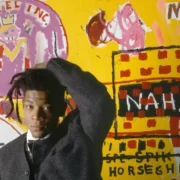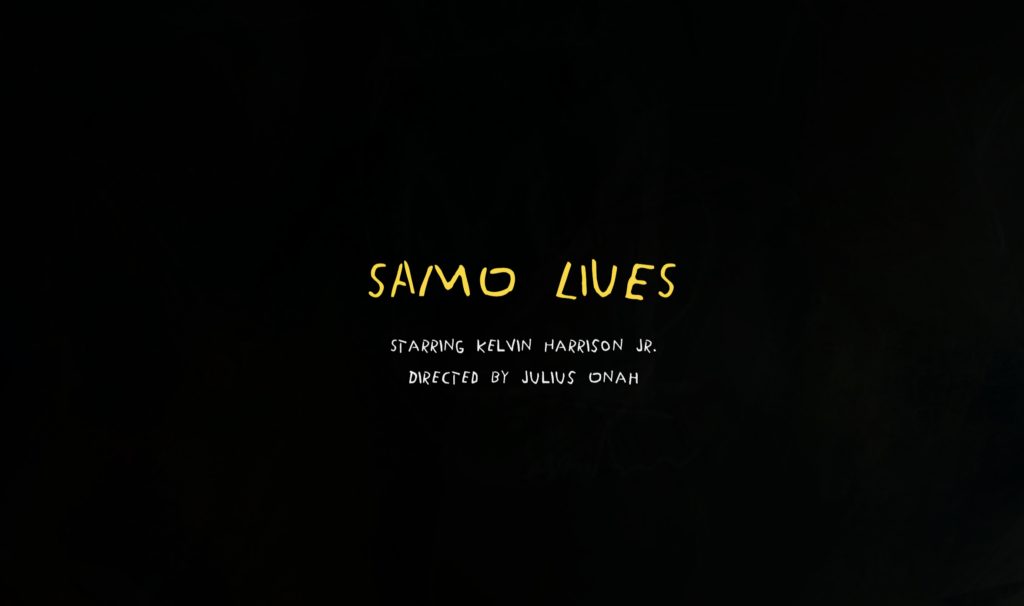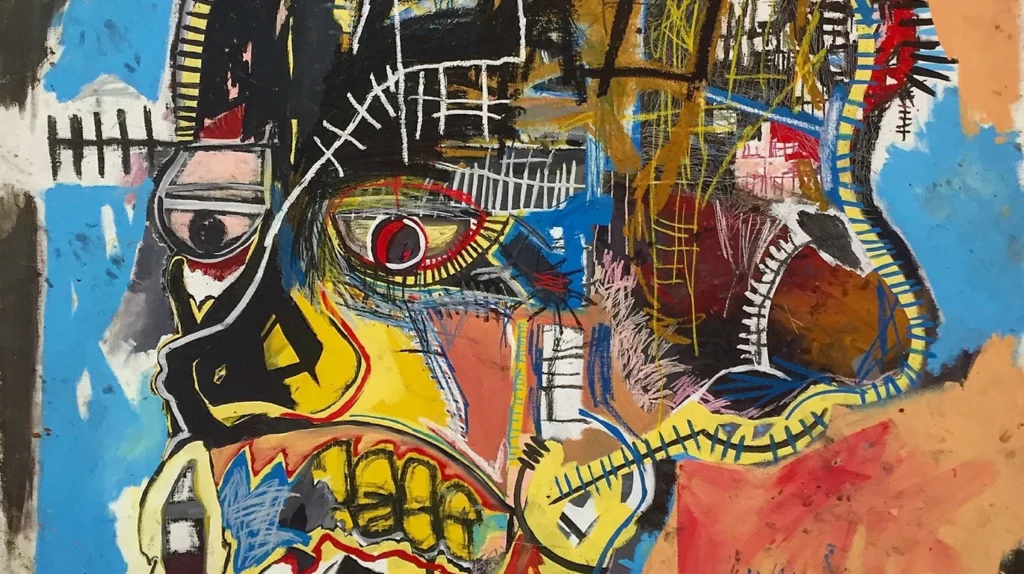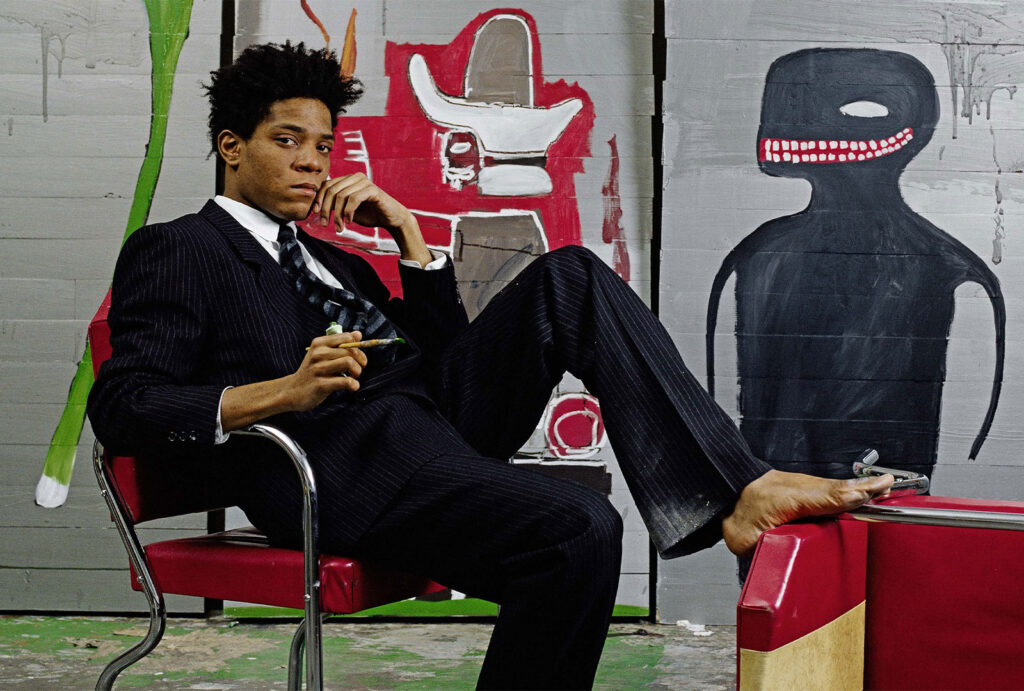Will The New Biopic on Jean-Michel Basquiat Break The Chain of Exploitation of The Artist’s Legacy?

From the Tiffany & Co. campaign to Dr Marten’s shoe “collaboration” will the new Basquiat biopic, be a much needed cleanse of the Artist’s commercial exploitation?
On the brink of another cinematic rendition of the life of visionary artist Jean-Michel Basquiat, this time being created by a Black filmmaker (for the first time), Julius Onah, the need to assess the use of the artist’s work and legacy is important, arguably now more than ever. The new biopic about the life of Basquiat which has been announced and set to start shooting this autumn, under the title, Samo Lives, sparks the question of its previous uses in both commercial and cinematic contexts.

In a statement by the director, Onah, released on the film’s website, while narrating the story of his work and life that led him up to this moment, the filmmaker blithely shares, speaking on the title, “This is a very deliberate choice because through any great artist’s work, their presence is still with us. And with Jean-Michel, that presence only grows stronger and more meaningful. But this choice also reflects on the ultimate intent of telling this story: to focus on the inspirational power of his life. And by capturing it through the lens of a Black director and writer of the diaspora for the first time, I believe his story can speak to a complexity of experience, and with specificity, we have yet to see.
Bringing people together with his work (across race, class, and culture) is perhaps Jean-Michel Basquiat’s greatest legacy of all.” And while this presents a very touching, intimate sentiment that the director hopes to channel over the course of the film, it would be false to say that every other use of the artist’s work on such a massive scale has shared his same thought.

From the Tiffany & Co. campaign to Dr Marten’s shoe “collaboration”, which simply featured a copy of the artist’s work on the side and tagged its collaboration as “continuing the artist’s legacy.” I might not have been best friends with Basquiat, though I’m pretty sure he wasn’t thinking about shoe collaboration’s expressing the social commentary and cultural importance of his work through each brushstroke or colour rendition on a canvas.
Speaking on the Tiffany & Co. campaign, I stand on the thought that it is undoubtedly a misuse of the artist’s work, not because it was simply used as a way to draw attention to the campaign, but it consciously understood the searing effect it would have been placed alongside two of this era’s greatest figures, that being Jay-Z and Beyoncé. The campaign nurtured itself into a truly capitalist effort. While the response towards this was split, friends of Basquiat were also challenged with trying to justify its use or support it, calling on the memories of the artist’s ethos and underpinnings of his whole career.
A previous studio assistant of Basquiat, Stephen Torton laughed at the meer irony of the campaign’s exploitation, as he reflects on the thought that Basquiat probably wouldn’t have been allowed into a Tiffany & Co. store “if he wanted to use the bathroom or if he went to buy an engagement ring and pulled a wad of cash out of his pocket.” And while some might state the times have changed, it is impossible, or rather even erroneous, to forget what these labels and fashion houses were built on.

In all its entirety, in the process of assessing whether or not the use of Basquiat’s work or legacy would be deemed right, I feel as though, speaking earnestly, that the matter all comes down to the intention behind it. That said, acknowledging the passing of the iconically pioneering artist and how he might possibly feel about his painting being used in a Tiffany & Co., only the individual—clothing label, director, ad campaign, and more—choosing to use his work in some way can truly know if it is appropriate.
In an interview with Converse All-Star series, paraphrasing Tremaine Emory’s—co-founder of No Vacancy Inn, Denim Tears, and now Supreme Creative Director—responses to using the work of black artists, he states that making the art and simultaneously raising awareness, or systemically fighting the same plight’s that the artist or people being referenced stood against, then, in that case, is it acceptable when using their creative thoughts or previous ideas; and the same, in my opinion, goes for that of Basquiat.
In regards to the upcoming biopic, there is a strong understanding that it will truly speak to that of the artist’s life and legacy, as it will be the first biopic made by a Black filmmaker—someone who, while not having lived in the same era as Basquiat, can still understand the struggles and challenges of being a Black artist and person in society. Perhaps, my only hope for the film is that it is created through a sense of understanding, authenticity, and urgency to translate the mind of Jean-Michel Basquiat into modern times through visual or conceptual messages.

Check out the GUAP Arts & Culture section, to discover new art, film, and creative individuals.

